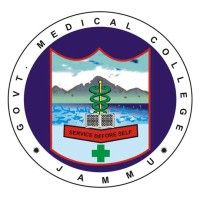预约演示
更新于:2025-05-07
NLRP3 x TLR4 x HMGB1
更新于:2025-05-07
关联
1
项与 NLRP3 x TLR4 x HMGB1 相关的药物作用机制 HMGB1抑制剂 [+2] |
在研机构 |
原研机构- |
非在研适应症- |
最高研发阶段临床前 |
首次获批国家/地区- |
首次获批日期1800-01-20 |
1
项与 NLRP3 x TLR4 x HMGB1 相关的临床试验CTRI/2008/091/000247
COMPARATIVE EVALUATION OF ACTEOSIDE AND SILYMARIN AS HEPATOPROTECTIVE AGENTS IN ACUTE HEPATITIS PATIENTS-A RANDOMIZED PROSPECTIVE OPEN FRAME STUDY
开始日期2008-12-15 |
申办/合作机构 |
100 项与 NLRP3 x TLR4 x HMGB1 相关的临床结果
登录后查看更多信息
100 项与 NLRP3 x TLR4 x HMGB1 相关的转化医学
登录后查看更多信息
0 项与 NLRP3 x TLR4 x HMGB1 相关的专利(医药)
登录后查看更多信息
120
项与 NLRP3 x TLR4 x HMGB1 相关的文献(医药)2025-05-01·Phytomedicine
Therapeutic efficacy of Xuebijing injection in treating severe acute pancreatitis and its mechanisms of action: A comprehensive survey
Review
作者: Shang, Hongcai ; Jiang, Tong ; Chen, Zhuo ; Zheng, Rui ; Zhang, Xinyi ; Zhang, Xiaowei ; Jiang, Huiru ; Peng, Mengqi
2025-02-01·International Immunopharmacology
Okra seed polysaccharides mitigate neuroinflammation and cognitive impairment via modulation of Nrf2/HO-1, HMGB1/RAGE/TLR4/NF-κB, NLRP3/Caspase-1, JAK-2/STAT-3, AMPK/SIRT1/m-TOR, PI3K/AKT/CREB/BDNF/TrkB and PERK/CHOP/Bcl-2 axes
Article
作者: Azadi, Parastoo ; Selim, Nabil M ; Gowifel, Ayah M H ; Mohamed, Ehsan K ; Black, Ian ; Nazeam, Jilan A ; Mulamoottil, Varughese A ; Hafez, Shaimaa M ; Hamdan, Ahmed M E ; El Shiekh, Riham A ; Abu-Elfotuh, Karema ; El Hefnawy, Hala Mohamed ; Atwa, Ahmed M
2025-02-01·International Immunopharmacology
Scopoletin alleviates acetaminophen-induced hepatotoxicity through modulation of NLRP3 inflammasome activation and Nrf2/HMGB1/TLR4/NF-κB signaling pathway
Article
作者: Wu, Di ; Yuan, Haidan ; Li, Hui ; Yuan, Yilin ; Piao, Guangchun ; Zhang, Jianxiu ; Cui, Qinglong ; Yuan, Fengxia
2
项与 NLRP3 x TLR4 x HMGB1 相关的新闻(医药)2024-12-12
摘要:尽管基于干细胞的治疗方法在管理某些疾病方面显示出比传统手术更大的潜力,但它也不可避免地存在一些缺点,这些缺点可能会限制其临床转化。与干细胞相比,干细胞衍生的外泌体拥有许多优势,例如无免疫原性、无输注毒性、易于获取、保存方便,且没有致瘤潜力和伦理问题。外泌体可以通过垂直传递其多能性或多向分化能力,从其亲本细胞(如胚胎干细胞和成体干细胞)继承相似的治疗效果。在对过去五年的相关文献进行彻底搜索和细致剖析后,我们呈现了这篇全面、最新、专业特定和疾病导向的综述,以突出干细胞衍生外泌体在外科应用和潜力。来自干细胞(例如胚胎干细胞、诱导多能干细胞、造血干细胞、间充质干细胞、神经干细胞和内皮干细胞)的外泌体能够治疗骨科手术、神经外科、整形外科、普通外科、心胸外科、泌尿科、头颈外科、眼科和妇产科中遇到的众多疾病。干细胞衍生外泌体的多样化治疗效果是通过组织特异性反应和细胞特异性分子信号通路的层级转化实现的。在这篇综述中,我们强调干细胞衍生外泌体作为管理各种外科状况的干细胞疗法的可行且强大的替代方案。我们建议未来的研究结合外科医生、纳米医学从业者和干细胞研究者的智慧,在这一相关且引人入胜的研究领域进行探索。
1.引言
干细胞是一群未分化的细胞,具有自我更新和重建功能性组织的独特能力。它们主要根据分化潜能、来源和谱系进展进行分类。根据它们的潜能,干细胞可以是全能的、多能的、多向的、寡能的和单能的。干细胞存在于胚胎和成体细胞中。胚胎干细胞(ESCs)和诱导多能干细胞(iPSCs)是多能干细胞的最佳例子,而成体多能干细胞则以造血干细胞(HSCs)、间充质干细胞(MSCs)、神经干细胞(NSCs)和内皮干细胞/祖细胞(EPCs)为代表。所有这些亚型的干细胞都已广泛用于人类疾病的治疗。
作为再生医学的一种方式,干细胞疗法引起了巨大关注,因为它为以前无法治愈的疾病患者提供了新的选择。随后,成千上万的相关临床试验被注册,涵盖了广泛的医学问题,如肌肉骨骼和神经系统疾病、免疫疾病、血液学功能障碍和退行性状况。然而,一些试验未能在临床上显示出任何益处。这可能是由于干细胞疗法不可避免的限制,如输注毒性、免疫原性、致瘤潜力和伦理问题。
外泌体,由几乎所有细胞类型包括干细胞分泌,被认为是比干细胞疗法更安全、更通用的替代品。外泌体是纳米级、球形、脂质双层单膜细胞外囊泡,充当细胞间信使。外泌体被视为其亲本细胞的缩小版,部分原因是某种细胞类型的外泌体提供细胞特异性或独特的生物分子集合。此外,已发现干细胞通过其可溶性分泌物包括外泌体以旁分泌方式发挥作用。换句话说,干细胞衍生的外泌体(SC-Exo)继承了其亲本细胞相似的治疗效果,例如抗炎、免疫调节和组织再生。总的来说,干细胞衍生的外泌体是干细胞疗法的强大替代品,没有表现出其细胞对应物所呈现的缺点。(表1)
在临床应用之前,外泌体必须在生产、纯化和修饰方面进行准备和优化。近年来,已发表了许多医学综述,分析了外泌体疗法的这些上游措施。然而,一些研究途径仍然未被充分调查:特别是,缺乏系统调查下游临床应用的研究,尤其是从外科角度来看。无论是由疾病还是外科医生的手术刀造成的组织损伤,都会通过炎症和再生动态作出反应,这使得外科成为干细胞衍生外泌体疗法的完美场所。干细胞衍生的外泌体继承了其亲本细胞相似的治疗效果,例如组织再生、抗炎和免疫调节。
在这项工作中,我们将剖析过去五年的相关出版物,以呈现一个全面、最新、专业特定和疾病导向的综述。我们的目标是弥合目前外科医生、纳米医学从业者和干细胞研究者之间存在的差距。
2.外泌体和外泌体疗法的一般背景
2.1.外泌体的生物发生、组成和摄取
外泌体在大小、内容和生产机制方面与其他类型的原发性细胞外囊泡(例如凋亡体和小囊泡)不同。外泌体形成的最广泛接受的机制,即内体途径,如下。最初的内体是通过细胞膜内陷产生的,在这个过程中生物活性物质开始在早期排序内体中积累。晚期排序内体随后形成多泡体(MVBs),在第二次内陷后。最后,MVBs与细胞膜融合,将携带的外泌体释放到外部。也有报道称非内体途径的外泌体生物发生,例如血浆膜出芽。
正如三大外泌体数据库(即ExoCarta、VesiclePedia和EVpedia)总结的,外泌体包含众多分子,包括蛋白质、糖复合物、脂质、核酸、代谢物和其他生物活性物质。每个类别的例子及其相应功能已在其他地方进行了全面审查。一方面,外泌体包括一个复杂的蛋白质网络,包括外部蛋白质(例如四跨膜蛋白、抗原呈递复合物和粘附分子)和内部蛋白质(例如热休克蛋白、ESCRT机制、细胞因子和趋化因子以及膜转运蛋白)。另一方面,作为人类外泌体核酸中最丰富的,微小RNA(mRNA)可以通过外泌体介导的细胞间通信参与造血、外泌体和神经及血管再生。
外泌体一旦到达受体细胞,就有多种摄取机制,这些机制可以归类为膜融合、受体相互作用和内吞作用(图1b)。最终,外泌体的货物被释放到细胞质中,这一过程取决于外泌体的来源、货物的性质以及受体细胞的代谢状态。从外泌体生物合成到摄取和细胞内信号传导的整个生命周期可以使用荧光、发光和放射性技术进行追踪。
图1 外泌体治疗的上游措施说明(使用Autodesk 3ds Max 2023生成的图表)。a 外泌体的生产和纯化(以MSCs和NSCs为例,展示多能干细胞)。b 天然外泌体的内容。c 外泌体的修饰。(BM 骨髓,DC 树突细胞,IAC 免疫亲和色谱,iPSC 诱导多能干细胞,MHC 主要组织相容性复合体,miRNA 微小RNA,MSC 间充质干细胞,MVB 多泡体,NSC 神经干细胞,SEC 尺寸排阻色谱,UC 脐带)
2.2.外泌体的来源和分类
根据外泌体是否经过人工修饰,它们大致被分类为天然外泌体和工程化外泌体(第2.4节)。根据物种来源,外泌体被分为动物源性和植物源性外泌体。目前,外泌体主要根据其亲本细胞的类型进行分类。几乎所有类型的人类细胞都能产生外泌体。这些包括但不限于巨噬细胞、树突状细胞(DCs)、血小板、干细胞,甚至是肿瘤细胞(图1a)。
例如,巨噬细胞源性外泌体有助于疾病进展(例如糖尿病、动脉粥样硬化和心力衰竭)和疾病治疗(例如皮肤创伤、炎症性肠病和真菌及病毒感染)。然而,它们在抑制和促进肿瘤方面似乎扮演着矛盾的角色。与DCs类似,DC源性外泌体(Dex)也可以通过其表面蛋白如主要组织相容性复合体(MHCs)与免疫细胞(例如T细胞、B细胞和NK细胞)相互作用。一些临床前和临床试验已经证明了基于Dex的免疫疗法对癌症的有效性和安全性。此外,肿瘤源性外泌体(Tex)不仅参与肿瘤增殖、侵袭、转移和免疫,而且可以作为癌症诊断和治疗的生物标志物。最近,Tex被用作抗肿瘤药物和DC疫苗的抗原呈递者,作为一种有前景的无细胞癌症免疫疗法。最后,干细胞源性外泌体的临床应用将在以下部分详细讨论。
外泌体可以在所有体液中找到,如血液、唾液、尿液、血浆、眼泪、精液、羊水甚至母乳。体液衍生的外泌体是疾病生物标志物的高稳定储库,协助液体活检在各种临床环境中进行,如癌症、心血管疾病和围产期疾病。然而,每种体液中共同存在的内容和可用性可能会给外泌体分离带来挑战。
2.3.外泌体的生产、分离和纯化
阻止基于外泌体的治疗进入临床实践的主要障碍之一是外泌体的产量和效率低。例如,在实验室环境中,从1毫升培养基中只能收获不到1微克的外泌体蛋白。有各种扩大外泌体生产的方法,这些方法被归类为生化策略(例如LPS、BMP-2、HIF-1α和IFN-γ及TNF-α)、物理策略(缺氧、热应激和饥饿)、机械策略(剪切应力和3D培养)和仪器策略(中空纤维生物反应器和搅拌罐生物反应器)。
外泌体在大小、内容、表面标记和来源方面是异质的,这使得它们的分离变得困难。目前可用的外泌体分离和纯化技术是基于它们的大小、表面电荷或免疫亲和性(图1a)。然而,没有一种“一刀切”的方法,因为这些技术都有优点和缺点。
例如,超速离心被认为是外泌体提取的金标准。尽管它需要最少的试剂和专业知识,但时间消耗、高成本、低效率和脂蛋白共分离限制了它的大规模使用。免疫亲和色谱是一种基于抗体和配体特异性结合的分离技术。它快速且提供高纯度、特异性和产量。然而,使用的抗原/蛋白偶联需要表达在外泌体表面。基于大小的分离技术主要是指超滤和尺寸排阻色谱,这两种方法都快速且适合大规模应用。但是孔堵塞、外泌体丢失和纯度低使得这种方法难以普及。尽管没有单一的技术是完美的,将上述技术与其他技术(例如基于沉淀和基于微流体的)结合起来可能是一种解决方案,以同时满足外泌体分离和纯化的多重要求。
2.4.外泌体的修饰
外泌体可以生化修饰以扩大、改变或改善它们的治疗效果。外泌体的修饰分为内部策略(例如药物装载)和外部策略(例如表面修饰)。一方面,外泌体可能是一个理想的治疗载体,用于输送药物、核酸和疫苗,因为它们在稳定性、非免疫原性和靶向受体细胞方面的优势。有各种货物装载技术,包括生产前装载方法(例如转染、共培养和电穿孔)和生产后装载方法(例如冻融循环、孵化、超声、挤出和低渗透析),这取决于它们是在外泌体生物合成之前还是之后应用(图1c)。例如,Tian等人使用电穿孔将阿霉素装载到Dex中以治疗乳腺癌。Kim等人使用孵化和超声将紫杉醇装载到RAW 264.7衍生的外泌体中以克服癌细胞的多药耐药性。Ohno等人使用转染将抗肿瘤let-7a miRNA装载到HEK293衍生的外泌体中以管理乳腺癌。
另一方面,外泌体的表面修饰以遗传工程外泌体膜或亲本细胞、化学连接靶向配体、静电相互作用和磁性纳米颗粒技术为例。表面修饰的主要目的是选择性地将外泌体输送到目标细胞以进行精确治疗。例如,Alvarez-Erviti等人通过遗传工程修改DC以表达Lamp2b和RVG肽,从而靶向中枢神经系统(CNS)。Zhu等人使用化学反应将肿瘤靶向肽c(RGDyK)插入外泌体表面以靶向胶质母细胞瘤。Nakase等人使用静电相互作用将外泌体与由pH敏感融合肽和阳离子脂质形成的复合物结合,从而实现增强的细胞质递送。
2.5.外泌体的特性和验证
外泌体在治疗应用前需要进行特性和验证。当前用于外泌体特性的方法主要集中在外泌体的大小、形态和货物剖面上。基于大小的验证包括纳米颗粒跟踪分析(NTA)、动态光散射(DLS)和可调电阻脉冲传感(TRPS),而基于形态的分析包括扫描电子显微镜(SEM)和透射电子显微镜(TEM)。此外,货物剖面进一步细分为蛋白质组学、脂质组学和基因组学分析,包括西方印迹、ELISA、流式细胞术、质谱和PCR。由于上述每种特性方法都有优点和缺点,将三个方面的分析结合起来是一种普遍做法,例如一组TEM、NTA和西方印迹,以识别分离的外泌体。
例如,基于显微镜的方法,如SEM和TEM,可以分别直接可视化表面形貌和内部结构。然而,由于操作复杂和样品制备繁琐,TEM不适合快速测量大量样品。NTA有助于快速检测和实时外泌体观察,同时比流式细胞术具有更高的分辨率。NTA的主要缺点是难以区分外泌体和污染蛋白。作为一种成熟的技术,西方印迹可以定性和定量地检测外泌体蛋白生物标志物的表达,特别是来自细胞培养介质的外泌体。然而,它耗时且不适合检测来自生物流体的外泌体。
2.6.外泌体的储存
目前用于外泌体长期保存的方法主要包括冷冻保存、冻干和喷雾干燥。温度和防冻液是冷冻保存中最重要的两个成分。4°C的储存可能会削弱外泌体的生物活性并减少蛋白含量,而-80°C被认为是对外泌体形态和内容影响最小的最佳温度。不可渗透的二糖防冻液,特别是海藻糖,是最佳选择,因为它可以防止外泌体聚集和冷冻损伤。对于热敏感材料,例如外泌体和疫苗,通过冷冻干燥的冻干处理可以轻易储存,并且通过简单地加水重新配制。最近的一项研究表明,即使在室温下储存,带有冷冻保护剂的冻干可以保持外泌体蛋白和RNA的活性大约4周。最后,与冷冻干燥相比,喷雾干燥是一个单步过程,从而减少了对昂贵设备和漫长多步骤研磨的需求。然而,喷雾干燥的核心参数,如外泌体给药速率、雾化压力和出口温度,都会影响外泌体的稳定性和货物完整性。
图2 外泌体治疗在外科应用的下游说明(使用Adobe Photoshop 2023和Adobe Illustrator 2023生成的图表)。外泌体的治疗效果是通过疾病特异性组织反应、组织特异性细胞变化和细胞特异性分子信号通路的层次转化实现的。
3.骨科和创伤手术以及SC-EXO治疗
3.1.骨折
骨折是最常见创伤性大型器官损伤,大约有10%无法正常愈合。骨折愈合涉及一个合成组织体积增加阶段和一个分解组织重塑阶段,这两个阶段受到各种因素的控制,如干细胞、先天和适应性免疫功能以及稳定性。骨折的生物药理治疗可以局部给药(例如骨形态发生蛋白,BMP)或系统给药(例如甲状旁腺激素,PTH)。作为一种有前景的替代方案,外泌体治疗骨折愈合主要利用骨髓源性MSCs作为细胞供应者(表2)。
推测MSC源性外泌体促进骨折愈合的机制如下。首先,骨修复的进展需要多种细胞,例如炎症阶段的炎症细胞、纤维血管阶段的内皮和间充质祖细胞、骨形成过程中的成骨细胞和软骨细胞以及骨痂重塑过程中的破骨细胞。其次,这些细胞中的大多数可以吸收外泌体,特别是成骨细胞和血管内皮细胞,它们与骨折愈合最为相关。最后,在吸收外泌体后,受体细胞的基因表达被修改,从而激活各种信号通路(图3a),引起各种细胞和组织反应(图3b),最终导致改善骨折愈合。
图3 干细胞衍生外泌体治疗的机制(使用Adobe Photoshop 2023和Adobe Illustrator 2023生成的图表)。a 激活和调节各种信号通路。b 疾病特异性的细胞和组织反应。
早期研究使用了各种动物模型来研究骨折愈合。在横向股骨干骨折模型中,发现外泌体不仅促进了野生型小鼠的成骨作用,还挽救了CD9−/−小鼠骨折愈合的迟缓,这是一种已知具有较低骨结合率的品系。在股骨不连模型中,外泌体通过可能的BMP-2/Smad1/RUNX2途径促进成骨和血管生成,从而增强骨折愈合。在胫骨牵张成骨模型中,年轻MSC分泌的外泌体促进了老年MSC的成骨能力,并在老年大鼠中增强了新骨形成。此外,EPC源性外泌体通过刺激血管生成加速牵张成骨过程中的骨再生。作为外泌体的主要货物(第2.1节),RNA可以改变受体细胞的基因表达和表型功能,其中微小RNA(miRNA)和长非编码RNA(lncRNA)被最广泛研究。从外泌体miRNA的角度来看,一个小组发现,骨髓MSC源性外泌体中的miR-136-5p促进了体外成骨细胞的增殖和分化,从而促进了体内的骨折愈合。这是通过抑制miR-163-5p的下游靶基因,低密度脂蛋白受体相关蛋白4(LRP4),通过Wnt/β-catenin途径实现的。另一个小组发现,MSC源性外泌体miR-25可以通过Smad泛素化调节因子1(SMURF1)调节Runt相关转录因子2(Runx2)的泛素化和降解,以促进小鼠骨折愈合。从lncRNA的角度来看,特别是骨特异性lncRNA H19,一个中国小组揭示了尽管高脂饮食减少了成骨分化并削弱了骨折愈合,但这可以通过MSC源性外泌体lncRNA H19通过miR-467/HoxA10轴在肥胖诱导的骨折模型中逆转。此外,一个美国小组证明了外泌体lncRNA H19不仅改善了成骨作用,还通过血管生成素1/Tie2-NO信号途径改善了血管生成。
与其使用MSC自然衍生的外泌体,一些研究人员对分离前的外泌体进行了预处理以获得更好的结果。梁等人用小剂量的二甲基草酰甘氨酸(DMOG),一种小的血管生成分子,预处理MSCs,以准备外泌体,通过靶向蛋白激酶B/mechanistic target of rapamycin(Akt/mTOR)途径,在临界尺寸颅骨缺损模型中增强血管生成和骨再生。另一种方法,陆等人将miR-29a装载到MSC源性外泌体中,通过靶向vasohibin 1,显示出强大的促进血管生成和成骨作用的能力。此外,脐带MSC源性外泌体在骨折愈合中显示出与骨髓MSC相当的成果。此外,低氧条件下的MSC源性外泌体对骨折愈合的效果比正常氧条件下的更好。从机制上讲,低氧预处理通过激活低氧诱导因子1(HIF-1α)增强了外泌体miR-126的产生。各种研究表明,低氧预处理是MSC源性外泌体治疗骨折愈合效果的有效和有前景的优化方法。
3.2.骨关节炎
骨关节炎(OA)是最常见的关节疾病,也是成人活动限制的最常见原因,全球约有2.4亿患者受到影响。OA的病理学已经从被视为仅软骨发展到影响整个关节的所有组成部分的多组织疾病,包括骨骼、滑膜、肌肉、韧带和周围脂肪。临床试验成功揭示了阻止结构进展(例如,组织蛋白酶K和Wnt抑制剂)或减少OA疼痛(例如,神经生长因子抑制剂)的系统化合物。作为一种潜在的OA治疗选择,大多数MSC源性外泌体治疗在体外模型中以软骨细胞为目标。这些MSCs可以来自各种组织,如骨髓、滑膜、牙龈和髌下脂肪垫(IPFPs)。
一些关注软骨生成的研究特别关注miRNA的作用。吴等人发现IPFP MSC源性外泌体通过miR100-5p调节的mTOR-自噬途径抑制来保护关节软骨免受损害,并改善OA小鼠的步态异常。由于在临床上通过关节镜手术容易从OA患者中检索到人类IPFP,这种类型的外泌体治疗可能会简化和加速从实验室到床边的过程。刘等人发现MSC源性外泌体可以通过lncRNA-KLF3-AS1/miR-206/GIT1轴促进软骨细胞的增殖并抑制其凋亡。孔等人进行的细胞工作表明,滑膜MSC源性外泌体miR-320c可以通过靶向ADAM19增强软骨生成。此外,毛等人建议,来自软骨生成MSCs的外泌体miR-92a-3p可以通过靶向Wnt5a增强软骨生成并抑制软骨降解。82 与这些使用原始外泌体的研究相比,很少有小组在系统给药前对外泌体进行了修改。陶等人通过转染滑膜MSCs与miR-140-5p修改外泌体,发现外泌体miR-140-5p过表达可以增强软骨组织再生并防止大鼠模型中的膝关节OA。同时,王等人使用TGF-β1刺激MSCs,由此产生的外泌体miR-135b通过调节特异性蛋白-1增加了软骨细胞的增殖。在一项比较研究中,朱等人证明了来自iPSC衍生的MSCs的外泌体比滑膜MSC衍生的外泌体对OA的治疗效果更强。
其他研究不仅关注软骨形成,还关注在骨关节炎(OA)治疗中的抗炎和免疫调节作用。例如,间充质干细胞(MSC)衍生的外泌体在体外抑制了炎症因子、与谷氨酰胺代谢活性相关的蛋白、谷氨酰胺以及GSH/GSSG比例,同时在体内改善了小鼠的软骨细胞功能、组织炎症和运动能力,从而缓解了OA的进展。使用整体方法,近期研究已将注意力从软骨转移到其他组织(例如,骨骼)在关节中。首先,骨髓MSC衍生的外泌体miR-206促进了OA中成骨细胞的增殖和成骨分化,通过减少E74样因子3(Elf 3),改善了炎症,并增加了小鼠股骨组织中骨钙素和BMP2的表达。其次,MSC外泌体处理的骨软骨缺陷表现出再生免疫表型,特征是CD163+ M2型巨噬细胞的浸润高于CD86+ M1型巨噬细胞,并伴随着促炎滑膜细胞因子IL-1β和TNF-α的减少。最后,牙龈MSC衍生的外泌体在预防胶原诱导的关节炎方面被证明具有免疫抑制作用。与亲代细胞相比,这些外泌体在抑制IL-17A和促进IL-10、降低关节炎的发病率和骨侵蚀方面具有相同或更强的效果,通过抑制IL-17RA-Act1-TRAF6-NF-κB信号通路。
目前,没有单一的“一刀切”药物可能适合所有OA患者。改变疾病的OA药物(DMOADs)可能成为下一代OA治疗。MSC衍生的外泌体治疗OA与DMOADs相吻合非常有价值和相关:两者都能靶向炎症细胞因子、基质降解酶和Wnt通路。因此,DMOADs开发中的新兴方法,如基于miRNA的模式和靶向细胞衰老,也可能被用来完善基于MSC的外泌体治疗OA。
3.3.脊髓损伤
创伤性脊髓损伤(SCI)是一个毁灭性的全球健康问题,对患者和社会都造成了重大的功能和经济负担。SCI的病理生理学包括由机械创伤引起的原发性损伤和以凋亡、水肿、缺血、炎症细胞浸润和兴奋毒性为特征的继发性损伤级联。尽管进行了外科干预,涉及药物治疗的临床研究可以被广泛分类为神经保护性或神经再生性。针对上述机制链的每个事件,MSC和NSC衍生的外泌体治疗都能对脊髓保护和再生产生有益影响。
一些研究小组已经针对神经细胞死亡。Ma等人。揭示了胰岛素样生长因子1(IGF-1)刺激的NSC衍生的外泌体可以通过miR-219a-2-3p/YY1途径抑制神经细胞凋亡,同时促进SCI后的功能恢复。另外,Zhang等人。发现蛛网膜下腔注射NSC衍生的外泌体可以通过激活自噬来抑制神经细胞凋亡,通过miR-374-5p/STK-4轴增强SCI后的功能恢复。Shao等人。使用MSC衍生的外泌体探索了其他形式的细胞死亡(例如,铁死亡),发现外泌体lncGm36569可以通过miR-5627-5p/FSP1轴抑制神经细胞铁死亡,从而减少神经功能障碍。
一些研究小组已经针对抗炎和免疫调节。Nakazaki等人。发现分数静脉注射MSC衍生的外泌体可以靶向M2型巨噬细胞并上调TGF-β,从而稳定微血管并改善功能恢复。类似地,Liu等人。证明除了缺氧增加骨髓MSCs中外泌体的产生外,预处理的外泌体miR-216a-5p也可以通过TLR4/NF-κB/PI3K/Akt途径调节小胶质细胞M1/M2极化,修复创伤性SCI。Huang等人。有价值地证明了硬膜外脂肪MSC衍生的外泌体可以减轻NLRP3炎症体并改善SCI后的功能恢复。与MSC衍生的外泌体相比,内皮祖细胞(EPC)衍生的外泌体可以提供相当的抗炎效果。Yuan等人。显示EPCs的外泌体miR-222-3p可以通过SOC3/JAK2/STAT3途径促进抗炎巨噬细胞,并改善SCI后小鼠的功能修复。
一些研究小组已经针对血管生成和血-脊髓屏障(BSCB)完整性。例如,Zhong等人。使用未修饰的NSC衍生的外泌体,发现它们富含VEGF-A,因此可以增强脊髓微血管内皮细胞(SCMECs)的血管生成活性。相比之下,Chen等人。用FTY720修饰NSC衍生的外泌体,FTY720是一种免疫调节剂和微血管调节剂,通过PTEN/Akt途径保护SCMECs的屏障功能,从而改善后肢功能。众所周知,脊髓微血管内皮与周细胞之间的连接对于维持BSCB的结构完整性至关重要。因此,Zhou的团队试图验证外泌体治疗在周细胞稳态中的作用。他们证明骨髓MSC衍生的外泌体可以减少体外周细胞焦亡并增加周细胞存活率,同时改善BSCB完整性和运动功能恢复。
最后,一些研究小组在神经保护和神经再生期间针对其他方面,如神经毒性星形胶质细胞和内源性NSC的可持续性。Lai等人。证明人脐带MSC衍生的外泌体可以通过靶向神经毒性星形胶质细胞来促进脊髓功能的恢复。此外,miR-146a-5p修饰的外泌体比未修饰的外泌体具有更强的效果。Li等人。发现从神经生长因子(NGF)过表达的骨髓MSCs衍生的外泌体可以增强NSCs的神经元分化和轴突再生。Zhou等人。证明胎盘MSC衍生的外泌体可以促进增殖内源性NSCs的激活,从而改善运动活性和膀胱功能障碍,这是一个可能进一步恶化SCI患者生活质量的常见后遗症。
3.4.肌肉和肌腱撕裂
肌肉和肌腱撕裂可能是由急性创伤(例如,骨折,第3.1节)或慢性过度使用(例如,运动损伤)引起的。肌肉拉伤和肌腱撕裂的愈合遵循典型的伤口愈合过程,涉及炎症、增殖和重塑阶段。包括基于细胞和基于生长因子的治疗在内的多种非外科策略已被试验以改善愈合。以下概念验证研究表明,MSC衍生的外泌体可能成为下一代肌肉骨骼治疗。
一方面,一些研究小组专注于肌肉-肌腱-骨单元的各个组成部分。Nakamura等人。声称MSC衍生的外泌体可以改善C2C12肌细胞的体外肌生成和HUVECs中的血管生成,同时加速体内骨骼肌再生在心脏毒素诱导的肌肉损伤模型中。这些好处至少部分是通过miRNAs如miR-494介导的。Chen等人。发现脂肪MSCs的外泌体可以增强原代腱细胞的增殖和迁移,同时通过上调装饰蛋白和小胶原在兔子跟腱断裂模型中改善修复肌腱的机械强度。
另一方面,一些研究小组将肌肉-肌腱-骨单元视为一个单一的功能系统,并使用肩袖撕裂作为疾病模型,这是患者寻求治疗的最常见肩部疾病。一组研究人员发表了两项连续的研究,使用脂肪MSC衍生的外泌体。在大鼠大量肩袖撕裂模型中,外泌体治疗可以防止肌肉的萎缩、炎症和血管化。在兔子慢性肩袖撕裂模型中,外泌体治疗可以防止脂肪浸润并改善生物力学特性。另一组报告说,骨髓MSC衍生的外泌体可以增加肩袖重建后的断裂负荷和刚度,诱导肩袖端点周围的血管生成,并促进腱-骨界面的生长。
3.5.其他骨科疾病
骨质疏松症是一种代谢性骨病,其特征是骨密度低和骨结构弱化,增加了骨折的风险。它是由破骨细胞骨吸收过度补偿成骨细胞骨形成引起的。在一项细胞研究中,脂肪MSC衍生的外泌体可以拮抗缺氧/血清剥夺诱导的骨细胞凋亡和骨细胞介导的成骨细胞生成。进一步的动物研究揭示了脐带MSC衍生的外泌体可以通过miR-1263/Mob1/Hippo途径抑制骨髓MSC凋亡并预防废用性骨质疏松症,并通过miR-2110和miR-328-3p改善胫骨密度和逆转雌激素缺乏性骨质疏松症。
与脊髓损伤(SCI)相比,周围神经损伤(例如坐骨神经损伤)更为常见。随后的神经再生受到神经元和施万细胞之间相互作用的控制,并因炎症细胞浸润而变得更加复杂。研究表明,脂肪MSC衍生的外泌体可以通过增加体外神经突起生长和体内轴突再生以及步行行为来靶向神经元。脂肪MSC衍生的外泌体可以通过促进施万细胞的增殖、迁移和神经营养因子的分泌来靶向施万细胞,在体外促进神经营养因子的分泌,并在体内恢复去神经肌肉萎缩。LPS预处理的MSC衍生外泌体可以通过增强体外M2型巨噬细胞极化来靶向炎症细胞,并加速体内周围神经再生。
腰椎间盘退变(IVD)是导致下背痛的主要原因,这是导致全球残疾寿命年数最多的伤害。其分子过程包括细胞外基质(ECM)退化、炎症、氧化应激、凋亡、衰老和自噬减少。外泌体治疗的新途径试图解决这些问题。Cheng等人证明,骨髓MSC衍生的外泌体通过外泌体miR-21抑制髓核细胞(NPC)凋亡,缓解IVD退变。另一方面,Chen等人发现,人类ESC衍生的外泌体可以通过传递miR-302c抑制NLRP3炎症体,从而减轻髓核细胞的焦亡。除了细胞死亡和线粒体损伤外,NPC中的氧化应激也被MSC衍生的外泌体抑制。由于IVD退变和OA共享常见的分子疾病谱,使用MSC衍生外泌体治疗OA(第3.2节)的积极结果可以作为IVD退变研究的参考。
股骨头坏死(ONFH),也称为缺血性坏死,是一种影响年轻人群的致残性疾病,通常导致全髋关节置换。糖皮质激素(GC)诱导的骨坏死是ONFH最常见的原因之一,其发病机制表现在两个方面:股骨头的血液供应受损和成骨活性减弱。刘等人表明,iPSC衍生的MSCs的外泌体可以通过PI3K/Akt途径促进血管生成和成骨来预防GC诱导的ONFH。Zuo等人证明,过表达miR-26a的外泌体衍生自HSCs,可以提供类似的治疗效果。
4.神经外科和SC-EXO治疗
4.1.缺血性中风
中风是全球死亡第二大原因,也是导致残疾的第三大原因,其中缺血性中风是最常见的亚型。缺血性级联反应中的关键事件包括神经元功能障碍、兴奋毒性、神经化学损伤和神经炎症。在治疗方面,新一代的临床试验正在进行中,使用细胞保护药物,如免疫调节剂、IL-6受体拮抗剂、Rho激酶抑制剂和自由基清除剂。针对上述病理生理学的每个事件,几乎所有亚型的SC-exo都显示出对中风恢复的强效治疗效果(表3)。
一些研究小组已经针对神经保护和神经发生。首先,SC-exo治疗可以抑制神经细胞死亡。Luo等人发现,NSC衍生的外泌体可以抑制凋亡,同时在正常和缺氧糖剥夺(OGD)条件下促进SH-SY5Y细胞的增殖。这在大脑中动脉闭塞(MCAO)模型中也得到了测试,表现为减少的梗死面积和神经细胞凋亡,通过外泌体miR-150-3p。其他体外和体内研究表明,使用EPC衍生的外泌体具有类似的抗凋亡效应。Zhang等人发现,通过用干扰素γ(IFN-γ)预处理亲代NSCs,可以提高外泌体的抗凋亡效应。其次,SC-exo治疗可以保护中枢神经系统的细胞。Kang等人揭示,来自骨髓MSCs的外泌体可以通过抑制NLRP3炎症体介导的焦亡来挽救OGD诱导的神经细胞损伤。来自缺氧培养的外泌体比正常培养的外泌体具有更显著的神经保护效应。同样,Li等人发现,来自人类iPSC衍生的神经祖细胞的外泌体对OGD神经元和神经突起生长具有神经保护作用。在缺血条件下保护神经功能是通过PTEN/Akt途径调节的。此外,Sun等人证明,NSC衍生的外泌体也可以保护星形胶质细胞,这些细胞在中风后变成支持反应性星形胶质细胞(RAs)。第三,SC-exo治疗可以改善中风后的神经发生。Wei等人表明,来自骨髓MSCs的外泌体中的Zeb2/Axin2可以改善中风后的神经发生、神经可塑性和空间记忆以及神经功能,可能通过SOX10、Wnt/β-catenin和内皮素-3/EDNRB途径。Wang等人说明,修饰miR-126的EPC衍生的外泌体可以通过增强神经发生来缓解急性脑损伤并促进中风后的功能恢复。
一些研究小组已经针对抑制神经炎症。首先,未修饰的SC-exo治疗通过外泌体miRNAs显示出抗炎效应。Dong等人表明,骨髓MSC衍生的外泌体可以在体外诱导BV2小胶质细胞失活和M2极化,同时通过传递miR-23a-3p减少体内梗死大小并改善神经功能。类似地,Zhang等人揭示,脐带MSC衍生的外泌体miR-146a-5p可以减轻体外OGD后小胶质细胞介导的神经炎症,同时通过IRAK1/TRAF6信号通路改善体内行为缺陷和小胶质细胞激活。其次,通过修饰外泌体可以增强SC-exo治疗的抗炎效应。Yoon和同事建立了过表达肿瘤易感性基因(TSG)101的人类NSCs,从而增加外泌体分泌。工程化外泌体不仅在体外减轻了LDH释放和促炎因子,而且在体内减少了梗死体积,抑制了DNA损伤途径,并上调了神经营养因子。此外,Tian的团队通过巧妙地将RGD肽附着在NSC衍生的外泌体膜上,开辟了新的领域,该外泌体在静脉给药后靶向缺血性大脑的损伤区域,从而通过抑制MAPK途径抑制脑缺血后的炎症反应。有趣的是,Gao等人使用从小鼠成纤维细胞重编程的诱导NSCs(iNSCs)进行中风治疗。他们表明,iNSC衍生的外泌体与NSC衍生的外泌体具有相似的治疗效应,不仅可以促进神经发生,还可以抑制神经炎症。
最后,一些研究小组在中风恢复期间针对其他方面,如神经化学损伤和氧化应激。Zhu等人将脑源性神经营养因子(BDNF)装载到NSC衍生的外泌体中,构建工程化外泌体。在H2O2诱导的氧化应激模型中,外泌体治疗显著增强了NSC的存活。在大鼠MCAO模型中,外泌体治疗不仅抑制了小胶质细胞激活,还促进了内源性NSCs向神经元的分化。总的来说,基于BDNF的NSC衍生外泌体的修饰在治疗缺血性中风中提高了效果。另一方面,修饰miR-210的EPC衍生外泌体可以保护神经元免受缺氧和再氧化(H/R)诱导的凋亡、氧化应激和活力下降,从而支持缺血性中风的治疗。来自富含ACE2的EPC衍生外泌体的miR-17-5p可以改善老年小鼠的脑缺血损伤。在Xu和同事进行的一项有趣的研究中,NSC-exo和EPC-exo的组合,通过BDNF-TrkB和Nox2/ROS途径保护H/R损伤的神经元,通过miR-210和miR-123过表达对缺血性中风发挥更好的治疗效果。
与缺血性中风相比,出血性中风对大多数幸存者构成了更致命的威胁和更严重的残疾。miR-137过表达被发现可以增强EPC衍生外泌体对氧血红蛋白处理的SH-SY5Y细胞(一种体外出血性中风模型)中凋亡、铁死亡和线粒体功能障碍的神经保护效应,部分通过COX2/PGE2途径实现。
4.2.创伤性脑损伤
全球每年大约有7000万患者遭受创伤性脑损伤(TBI),这构成了严重的身体、心理社会和经济威胁。TBI可以分为原发性损伤(例如,轴突死亡、神经炎症、神经化学变化和代谢功能障碍)和继发性损伤(例如,缺血和缺氧损伤、脑水肿、颅内压增高、脑积水和感染)。每位TBI患者都有一套独特的情况,这取决于伤害的位置和严重程度等变量,使得医疗和外科治疗相当具有挑战性。因此,使用SC-exo的系统疗法可能成为管理TBI的“一刀切”选项。
一系列最初关注MSC衍生外泌体疗法功能恢复和宏观方面的动物研究发表。在大鼠TBI模型中,接受外泌体治疗的动物在空间学习和感觉运动功能方面显示出显著改善。此外,外泌体治疗显著增加了病变边界区域新生内皮细胞的数量,以及齿状回中的新生未成熟和成熟神经元。在另一个具有类似发现的大鼠TBI模型中,从3D系统中培养的MSC衍生的外泌体比传统2D条件下的外泌体提供了更好的结果。在对主要运动皮层进行TBI的猴子模型中,接受外泌体治疗的动物在恢复的前3-5周内恢复到术前的抓握模式和获取食物奖励的潜伏期。在一个更复杂且临床上更现实的大动物模型中,研究了TBI和出血性休克,外泌体疗法减轻了神经损伤的严重程度并加快了神经恢复。
相比之下,近年来完成的研究为SC-exo疗法对TBI的分子机制提供了新的见解。Chen等人报告称,脂肪MSC衍生的外泌体可以通过特别被微胶质细胞摄取并抑制它们的激活来促进功能恢复、抑制神经炎症、减少神经元凋亡和增加神经发生,通过抑制NF-κB & MAPK途径实现。Wen等人表明,骨髓MSC衍生的外泌体可以减少TBI小鼠模型的皮层组织中细胞凋亡,抑制神经炎症,并促进微胶质细胞向抗炎表型的转变。这是通过miR-181b对IL-10/STAT3途径的作用实现的。Abedi等人证明,NSC衍生的外泌体可以改善神经行为表现,抑制星形胶质细胞神经炎症,增强神经发生,同时保持NSC干性。一个有价值的额外发现是,与亲本NSC相比,外泌体在感觉运动功能恢复方面似乎更优越。最后,剂量反应和治疗窗口表明,MSC衍生的外泌体可以改善血管生成和神经发生,以及感觉运动和认知功能,同时减少神经炎症和海马神经元细胞丢失。尽管100 µg和1天可能是最佳剂量和治疗窗口,但外泌体在至少7天伤后的治疗窗口内对TBI治疗显示出广泛的有效剂量范围。
TBI和SCI是两种最严重的CNS创伤,日益被认为是全球健康优先事项。第3.3节和4.2节中提出的新兴证据对这两个密切相关的研究子专业是相互有益的。因此,未来对TBI和SCI的SC-exo疗法的研究可以是机制基础的(例如,脑肠轴转录因子炎症体和补体系统的作用)或基于修饰的(用药物装载外泌体,例如,免疫调节剂抗氧化剂循环RNA和microRNAs)。
4.3.阿尔茨海默病
与TBI和SCI不同,阿尔茨海默病(AD)和帕金森病(PD)是最常见的神经退行性疾病(NDD)。NDD的标志包括但不限于,病理性蛋白聚集,突触和神经网络功能障碍,异常蛋白质稳态,细胞骨架异常,能量稳态改变,DNA和RNA缺陷,炎症和神经元细胞死亡。AD是全球最常见的痴呆形式,占2500万例。目前,只有两类药物被批准用于症状性AD治疗,包括胆碱酯酶抑制剂和NMDA拮抗剂。尽管有几种疗法正在积极进行临床试验,但它们都远未治愈AD。大脑-药物输送的挑战,例如,血脑屏障(BBB)和药代动力学缺点,很可能被纳米大小的外泌体解决,这些外泌体还包装有强大的生物分子。大多数SC-exo疗法涉及淀粉样β(Aβ),它位于AD病理生理学的中心。
最初的工作集中在清除病理性蛋白Aβ肽的聚集。Elia及其同事通过脑内注射MSC衍生的外泌体,在AD的临床前模型的早期阶段减少了皮质和海马中的Aβ斑块负担和营养不良的神经突起。此外,作者使用免疫印迹确认了Neprilysin的存在,Neprilysin是一种能够降解Aβ的中性内肽酶,存在于外泌体的裂解物中及其mRNA中。
一些团队专注于缓解突触功能障碍和氧化应激。Wang等人发现,MSC衍生的外泌体可以挽救突触损伤并改善APP/PS1小鼠的认知行为,同时减轻外源性Aβ诱导的诱导型一氧化氮合酶(iNOS)表达。与使用MSC衍生的外泌体不同,Li等人给予NSC衍生的外泌体并增强线粒体功能,激活sirtuin 1,突触活动,并挽救认知缺陷。Huber等人注意到,热休克诱导的NSC衍生的外泌体表现出更大的神经保护作用,对抗氧化应激以及Aβ诱导的神经毒性。
一些团队将研究重点放在能量稳态上。Chen等人发现,MSC衍生的外泌体可以改善AD转基因小鼠的大脑葡萄糖代谢和认知功能,分别使用18F-FDG PET/CT成像和NOR测试。
一些团队专注于小胶质细胞神经炎症。在Zavatti的细胞研究中,发现羊水MSC衍生的外泌体可以减轻神经炎症小胶质细胞表型并从Aβ中恢复神经毒性,使用LPS刺激的BV2小胶质细胞和SH-SY5Y神经母细胞瘤细胞作为模型。Ding等人表明,脐带MSC衍生的外泌体可以通过调节小胶质细胞激活来减轻神经炎症和减少Aβ沉积,从而增加AD小鼠的空间学习和记忆功能。
一些团队专注于神经元细胞死亡和神经发生,希望抵消AD的进展。Reza-Zaldivar及其同事给予AD小鼠MSC衍生的外泌体,SC-exo疗法刺激了侧脑室区的神经发生并减轻了Aβ诱导的认知障碍。这些效果与MSC中显示的效果相当。
一些团队专注于血脑屏障(BBB),其功能障碍导致通透性增加、微出血、葡萄糖运输受损以及周细胞和内皮细胞退化。刘等人指出,5xFAD(家族性阿尔茨海默病)小鼠在4个月大时BBB破裂,更重要的是,用NSC衍生的外泌体治疗逆转了AD引起的BBB缺陷。
最后,一些团队专注于提高AD的SC-exo疗法的技术性。当外泌体被静脉注射时,它们可以在大脑以外的其他器官中被追踪,而不是目标区域。崔等人将MSC衍生的外泌体与CNS特异性狂犬病病毒糖蛋白(RVG)结合,以靶向转基因AD小鼠的大脑。修改后的外泌体不仅显示出增加的皮层和海马体输送,而且还显著改善了学习能力和记忆能力,同时减少了Aβ沉积。另一方面,高等人通过体细胞重编程获得了iNSC,为治疗性外泌体的来源开辟了新窗口。他们证明,与NSC衍生的外泌体具有相似治疗效果的iNSC衍生外泌体,可以减轻各种AD表型,例如,认知功能、Aβ沉积、神经炎症和神经再生,在临床前小鼠模型中。
4.4.帕金森病
帕金森病是老年人中第二常见的神经退行性疾病,全球影响超过600万患者。PD是由黑质多巴胺能神经元坏死和名为Lewy体的蛋白质包涵体存在引起的。分子病理生理学包括α-突触核蛋白蛋白质稳态、线粒体功能障碍、氧化应激、钙失衡和神经炎症。
在一项使用骨髓MSC衍生外泌体的研究中,黄等人发现,外泌体衍生的肿瘤坏死因子刺激基因-6(TSG-6)可以减轻1-甲基-4-苯基吡啶离子(MPP+,神经毒素MPTP的代谢产物)诱导的神经毒性。在这个使用SH-SY5Y和SK-N-SH细胞的体外PD模型中,外泌体抗PD进展效应被发现是通过STAT3/miR-7/NEDD4轴介导的。
在一项使用NSC衍生外泌体的研究中,李等人揭示了SC-exo疗法可以帮助预防PD的神经病理学和进展。在体外对SH-SY5Y和BV2细胞工作时,NSC衍生的外泌体可以减少细胞内活性氧(ROS)和相关的凋亡途径。在体内对6-羟多巴胺诱导的PD小鼠工作时,NSC衍生的外泌体可以下调促炎因子并显著减少多巴胺能神经元丢失。确认了NSC特异性microRNAs的存在,如miR-182-5p、miR-183-5p、miR-9和let-7,并发现它们参与细胞分化、神经营养功能和免疫调节。
4.5.多发性硬化症
多发性硬化症(MS)是最常见的非创伤性、神经退行性和致残性CNS疾病,影响年轻成人。MS的病理标志是大脑和脊髓中脱髓鞘病变的形成,伴有炎症和自身免疫参与。目前批准的疾病修饰疗法包括基于干扰素的、免疫调节的、免疫抑制的和免疫重建药物。一些初步研究强调了MSC衍生外泌体对MS治疗的潜力。
在一项使用实验性自身免疫性脑脊髓炎(EAE)大鼠的动物实验中,李等人表明SC-exo疗法显著降低了神经行为评分,减少了炎症细胞渗入CNS,并减少了脱髓鞘。此外,外泌体治疗通过调节小胶质细胞的极化,上调M2相关细胞因子,同时下调M1相关细胞因子。
在一项使用两种脱髓鞘小鼠模型(EAE模型和铜饮食模型)的动物研究中,张等人发现SC-exo疗法可以通过直接作用于少突胶质细胞(OL)前体和间接作用于小胶质细胞来促进再髓鞘化。MSC衍生的外泌体可以改善神经系统结果,增加新生成和成熟的OL数量,减少Aβ前体蛋白密度,通过从M1转变为M2表型减少神经炎症,并抑制TLR2/IRAK1/NF-κB途径。
4.6.其他神经外科和相关疾病
上述已经详细讨论了MSC和NSC衍生外泌体疗法在四种主要类型的神经外科或神经系统疾病中的外科潜力。除了血管破裂、创伤、神经退行性和自身免疫相关疾病外,最近证明其他疾病也适合SC-exo疗法(表3)。这些包括但不限于:1,痴呆症,如血管性痴呆。HIV相关的神经认知障碍和辐射诱导的认知功能障碍;2,功能障碍,如癫痫和机械性痛觉过敏;3,先天性异常,如开放性脊柱裂;4,神经心理状况,如抑郁和压力;5,大脑衰老;6,医源性大脑问题,如深度低温循环停止。
5.整形外科和SC-EXO疗法
人体所有部位都发生伤口愈合,其中皮肤伤口最为常见。伤口相关费用最高的是外科伤口,其次是糖尿病溃疡。伤口愈合的总体但重叠阶段包括止血、炎症、血管生成、增殖和重塑,每个阶段由不同的细胞类型控制,并由各种信号通路调节。超过一半的相关使用SC-exo疗法促进皮肤伤口愈合的工作是基于MSC的(表4)。
在炎症阶段,外泌体能够抑制外周血单个核细胞的增殖,并在体外促进调节性T细胞的转化,减少皮肤中淋巴细胞的浸润。此外,外泌体能够减少IgE、嗜酸性粒细胞和肥大细胞的数量,并下调炎症细胞因子。在血管生成阶段,受过教育的外泌体(例如,阿托伐他汀和去铁酮)能够通过Akt/eNOS和PTEN/PI3K/Akt途径促进糖尿病伤口的血管生成。内皮祖细胞衍生的外泌体能够通过Erk1/2途径和p53途径加速皮肤伤口愈合。在增殖阶段,干细胞衍生的外泌体能够促进成纤维细胞和角质形成细胞的增殖和迁移。一些是通过PI3K/Akt、Akt/HIF-1α、ERK1/2和Wnt/β-catenin途径实现的,而另一些则是通过抑制LATS2、PPARγ和AIF核转位实现的。在伤口愈合的最后重塑阶段,肉芽组织被永久性瘢痕所取代,异常的伤口愈合可能会发生(例如,瘢痕疙瘩和肥厚性瘢痕)。间充质干细胞衍生的外泌体能够通过TGF-β/Smad2途径抑制成纤维细胞-肌成纤维细胞的转化,并在早期增加胶原蛋白合成,在晚期减少,从而减少瘢痕形成。此外,胚胎干细胞衍生的外泌体被发现对伤口愈合具有与间充质干细胞衍生的外泌体相似的治疗作用。陈等人使用人类胚胎干细胞衍生的外泌体帮助治疗压力性溃疡。他们注意到外泌体能够通过激活Nrf2改善内皮细胞衰老,并恢复与衰老相关的血管生成功能障碍,从而加速伤口愈合。此外,Bae等人揭示了来自胚胎干细胞的外泌体mmu-miR-291a-3p能够通过TGF-β受体2途径抑制人皮肤成纤维细胞的细胞衰老,从而加速切除性皮肤伤口愈合过程。除了伤口愈合,其他与整形外科相关的疾病已被证明适合SC-exo治疗(表4)。这些包括但不限于:1,皮肤移植,如皮瓣;2,组织丢失,如颅面缺陷;3,自身免疫性皮肤病,如硬皮病;4,皮肤感染,如利什曼病;5,毛发移植,如治疗脱发;6,皮肤老化。
6.普通外科和SC-exo治疗
作为普通外科的一个主要亚专业,肝胆外科对SC-exo治疗引起了极大的关注。首先,急性肝损伤(ALI)/急性肝衰竭(ALF)是一种罕见但具有挑战性的综合征,表现为肝功能障碍、凝血病、脑病和多器官衰竭。大约60%的ALF病例需要并接受原位肝移植或导致死亡。在一项研究中,林的团队关注了ALI的细胞死亡方面,并发现间充质干细胞衍生的外泌体能够通过稳定SLC7A11对抗四氯化碳诱导的ALI中的铁死亡。或者,邵的团队关注了外泌体的预分离修饰,并揭示了来自脐带间充质干细胞的外泌体能够通过外泌体miR-455-3p改善IL-6诱导的ALI。其次,与ALI相比,肝纤维化发生在肝脏持续慢性损伤时,可能会发展成肝硬化、肝衰竭、肝细胞癌甚至死亡。马等人发现间充质干细胞起源的外泌体circDIDO1能够通过miR-141-3p/PTEN/Akt途径在人肝纤维化中抑制肝星状细胞的激活。此外,王等人发现来自3D人类胚胎干细胞球体的外泌体能够通过外泌体miR-6766-3p的失活Smad途径减轻肝星状细胞的激活并抑制肝纤维化。对于那些需要肝移植的晚期肝纤维化患者,肝脏缺血再灌注损伤(IRI)是移植物功能障碍和器官排斥的严重并发症。杨等人证明骨髓间充质干细胞衍生的外泌体能够缓解肝IRI,减少肝细胞凋亡,并降低肝脏酶水平,通过增强自噬。杜等人表明,来自iPSC衍生的间充质干细胞的外泌体能够通过激活鞘氨醇激酶和鞘氨醇-1-磷酸途径保护肝脏免受肝IRI。第三,非酒精性脂肪肝病(NAFLD)被知道对中风恢复产生不利影响。使用2型糖尿病小鼠模型,Venkat等人证明HSC衍生的外泌体能够同时减少肝功能障碍并改善神经和认知功能。最后,急性胰腺炎是一种不可预测且可能致命的疾病,其预后主要取决于是否发展成多器官功能障碍综合征。陈等人揭示了来自iPSC衍生的间充质干细胞的外泌体能够通过Akt/Nrf2/HO-1途径改善严重急性胰腺炎引起的心肌损伤。外周动脉疾病影响全球2亿患者,在最严重的阶段,可能导致严重肢体缺血,使患者面临增加的心血管事件、截肢和死亡风险。作为一种无细胞治疗,胎盘间充质干细胞衍生的外泌体输注能够在小鼠耳缺血损伤模型中增强血管生成,使用激光多普勒血流分析。从机制上讲,间充质干细胞衍生的外泌体不仅促进体外管状结构的形成,而且动员内皮细胞进入皮下Matrigel栓塞体内,主要通过外泌体促血管生成的微小RNA,如miR-30b。此外,HSC衍生的外泌体能够通过改善肢体灌注、毛细血管密度、运动功能及其截肢来修复小鼠的缺血后肢。这很可能是由于内皮细胞相对于平滑肌细胞和成纤维细胞的外泌体miR-126-3p的内化。人类iPSC衍生的外泌体通过外泌体miR-199b-5p展示了类似的新生血管生成效应。另一方面,腔内再通越来越多地被用来重建血流到缺血区域,并恢复外周动脉疾病患者的组织丢失或坏疽。三个独立的团队都证明了EPC衍生的外泌体能够通过增强内皮细胞功能促进血管修复并加速大鼠球囊诱导的血管损伤模型中的再内皮化。此外,Kong等人通过抑制新内膜增生展示了EPC衍生的外泌体对球囊损伤的类似保护效果。这是通过促进再内皮化和抑制再狭窄而不是通过直接抑制平滑肌细胞的增殖和迁移来实现的。
McCulloh及其同事发表了一项关于坏死性小肠结肠炎(NEC)的SC-exo治疗的有趣研究,该研究对需要手术的早产儿的总体死亡率超过30%。作者比较了四种不同类型的干细胞衍生的外泌体的治疗效应,即羊水间充质干细胞、骨髓间充质干细胞、羊水神经干细胞和新生儿肠神经干细胞。当以至少4×10^8的浓度注射时,所有类型的SC-exo都被证明能够像它们的亲本干细胞一样有效地减少实验性NEC的发生率和严重程度。
败血症是普通外科中致命且可能可以预防的并发症,其中微血管功能障碍导致多器官衰竭和死亡。使用通过盲肠结扎和穿刺(CLP)的小鼠败血症模型,周等人证明EPC衍生的外泌体能够改善败血症结果。这表现为减少肺和肾脏血管渗漏,改善器官功能,并增加通过外泌体miR-126-5p和miR-126-3p的生存率。同样,刘等人通过外泌体miR-382-3p通过IκBα/NF-κB途径展示了EPC衍生的外泌体对败血症诱导的器官损伤和免疫抑制的保护作用。
7.心脏外科和SC-EXO治疗
全球主要死因是缺血性心脏病(IHD),主要由阻塞性冠状动脉粥样硬化引起。动脉粥样硬化斑块的破裂是急性动脉血栓形成导致心肌梗死(MI)最常见的触发因素。心肌长期缺氧可导致心肌细胞死亡。尽管及时的再灌注至关重要,但可能发生心肌IRI,从而减轻再灌注的有益效果。尽管现代冠状动脉再灌注,与急性MI导致的心力衰竭发展相关的死亡率和发病率仍然很高,这突出了下一代心脏保护治疗的重要性,如SC-exo。
邢等人进行的工作关注动脉粥样硬化。脂肪来源的间充质干细胞衍生的外泌体miR-342-5p被证明可以通过靶向H2O2挑战的HUVEC模型中的PPP1R12B来保护内皮细胞免受动脉粥样硬化的影响。彭等人和高等人进行的工作关注MI。来自间充质干细胞的外泌体miR-25-3p能够通过靶向促凋亡蛋白和EZH2来缓解MI,在OGD心肌细胞模型和左前降支结扎动物模型中。类似地,人类iPSC衍生的外泌体可以在不增加心律失常并发症的频率的情况下改善MI的恢复,在猪模型中。温等人和桑索等人进行的工作关注心肌细胞的死亡。间充质干细胞衍生的外泌体可以通过miR-144靶向PTEN/Akt途径在缺氧条件下改善心肌细胞凋亡,而iPSC衍生的外泌体可以调节缺氧心肌细胞中的自噬。卡苏尔等人和陈等人关注心肌IRI。前者发现来自非心肌细胞相关细胞的外泌体,即CTX0E03 NSCs,可以通过JAK/STAT途径减少梗死面积,同时延迟心肌细胞线粒体通透性转换孔的开启。后者发现间充质干细胞衍生的外泌体miR-143-3p可以通过CHK2-Beclin2途径调节自噬来抑制心肌IRI。最后,陈等人证明骨髓间充质干细胞衍生的外泌体可以减轻压力过载诱导的重构中的心肌肥大和纤维化,从而为心力衰竭提供了有希望的潜在治疗。
与间充质干细胞衍生的外泌体相比,来自胚胎干细胞的外泌体对心脏状况显示出相似的治疗效果。在保护心肌细胞方面,Khan等人发现胚胎干细胞衍生的外泌体miR-294可以改善心肌细胞存活,促进新生血管形成并抑制MI后的纤维化,从而增强MI后心脏功能。此外,Tavakoli Dargagni等人证明胚胎干细胞衍生的外泌体可以通过抑制TLR4-NLRP3介导的焦亡细胞死亡来减轻阿霉素诱导的心脏毒性。类似地,Singla团队表明胚胎干细胞衍生的外泌体可以通过增强抗炎M2型巨噬细胞和减少炎症诱导的焦亡来改善心脏重构。在管理心力衰竭方面,Pang等人展示胚胎干细胞衍生的外泌体可以通过FGF2信号在主动脉缩窄诱导的心力衰竭模型中减轻心力衰竭,改善心脏功能,并促进心肌血管生成。使用冠状动脉闭塞诱导的心力衰竭模型,Kervadec等人表明胚胎干细胞衍生的心血管前体分泌的外泌体可以恢复心脏功能,如减少左心室收缩末期和舒张末期容积。最后,同一研究小组后来证明,来自更易获得的细胞来源的外泌体,例如iPSCs,能够提供与胚胎干细胞衍生的外泌体相似的心脏保护效果。
其他重要的SC-Exo亚型,如iPSC-exo、HSC-exo和EPC-exo,也显示出心脏保护效果。例如,iPSC分泌的外泌体可以发挥细胞保护作用,维持细胞内Ca2+稳态并促进心肌细胞存活,从而改善MI的恢复。HSC-exo可以减少心脏损伤相关指标和心脏纤维化程度,同时提高心力衰竭动物模型的射血分数。此外,HSC衍生的外泌体的全身输注可以改善急性MI大鼠模型中的缺血性心肌病,同时在治疗副作用如肾脏损伤方面也有额外的好处。使用声波刺猬蛋白(Shh),一种血管生成因子,通过将外泌体Shh传递到缺血心肌,可以保持急性MI后的心脏功能。Ke等人证明EPC衍生的外泌体可以通过激活间充质-内皮转化和降低HMGB1的表达来增强心脏成纤维细胞的增殖和血管生成,后来发现EPC衍生的外泌体中的外泌体miR-218-5p和miR-363-3p可以通过靶向p53/JMY途径改善MI。在Yue等人的一项有趣的研究中,发现IL-10缺乏引起的全身炎症会通过在受体细胞中外泌体富集整合素相关激酶(ILK)和ILK介导的NF-κB途径的激活来损害EPC衍生的外泌体对心肌修复的修复特性。
在治疗胸部疾病方面,刘等人证明人类胚胎干细胞衍生的外泌体可以减轻炎症,防止过量胶原沉积,并保持博来霉素诱导的肺纤维化小鼠肺部的肺泡结构。这是通过外泌体mi-17-5p靶向血栓蛋白-2实现的。同样,周等人证明iPSC衍生的外泌体中的外泌体miR-302a-3p可以通过TET1抑制M2型巨噬细胞,从而减轻肺纤维化。刘等人表明EPC衍生的外泌体可以通过调节Mitofusion-2和Ras-Raf-ERK1/2途径抑制肺动脉平滑肌细胞增殖及其对凋亡的抵抗力,从而作为治疗肺动脉高压的潜在治疗候选药物。两个独立团队都揭示了人类EPC衍生的外泌体可以通过将miR-126传递到受损肺泡来改善LPS诱导的急性肺损伤的结果。张等人发现EPC衍生的外泌体可以改善肺微血管内皮细胞的生物活性,并保护它们免受过氧化损伤,在发育中的肺血管中,从而有助于治疗支气管肺发育不良。此外,Montay-Gruel等人证明人类胚胎干细胞衍生的外泌体可以改善与暴露于肺部电离辐射相关的晚期正常组织并发症,如在肺癌术后治疗中遇到的。
8.泌尿科和SC-EXO治疗
慢性肾脏病(CKD)是一种以肾脏结构、功能或两者持续变化为特征的综合征,影响全球10-14%的人口。CKD最常见的病理特征和最终表现是某种形式的肾纤维化。当伤口愈合失调时会发生肾纤维化,导致过多的细胞外基质蛋白,如胶原和纤维连接蛋白的积累。在他们的研究中,刘等人发现骨髓间充质干细胞衍生的外泌体可以通过靶向NFAT5的外泌体miR381-3p来减轻血管钙化,这是CKD中发病率和死亡率的一个不利指标。这在透析患者的严重动脉钙化中得到了进一步验证。在替代研究中,几个小组证明了骨髓间充质干细胞衍生的外泌体在治疗肾纤维化方面的能力,每个都有不同的作用机制解释。在细胞研究中,尹等人发现外泌体可以通过运输Nedd4L来防止TGF-β1诱导的肾小管上皮细胞的上皮-间充质转化,Nedd4L激活自噬。在5/6亚全肾切除大鼠模型中,刘等人揭示外泌体可以通过调节Smurf2/Smad7轴来改善肾功能并减少纤维化大小。在单侧输尿管梗阻诱导的间质纤维化小鼠模型中,陆等人证明外泌体可以通过激活EP2受体减少M1和M2型巨噬细胞的极化来改善肾纤维化。
急性肾损伤(AKI)和CKD紧密相连,每个都是发展为另一个的风险因素。肾脏IRI是AKI和急性肾衰竭的主要原因。Lim等人证明来自iPSC衍生的间充质干细胞的外泌体可以通过激活ERK1/2信号通路纠正AKI小鼠的血清肌酐水平、小管坏死、凋亡、炎症细胞因子产生和氧化应激。在张等人的类似工作中,发现EPCs的外泌体miR-21-5p可以通过抑制CLP大鼠中RUNX1的表达来减轻败血症诱导的AKI。
9.耳鼻喉头颈外科和SC-EXO治疗
听力损失是全球最常见的感觉缺陷,影响着近20%的全球人口。感音神经性听力损失(SNHL)的原因非常多样,如老年性耳聋、耳毒性药物诱导、噪声诱导和特发性突发性SNHL。Tsai团队证明,脐带间充质干细胞(MSC)衍生的外泌体能够挽救顺铂诱导的听力损失中外毛细胞的丢失,并修复耳蜗损伤。耳蜗保护效应的潜在机制是通过miRNAs(例如miR-125a-5p和miR-125b-5p)和重塑因子(例如纤维连接蛋白和半乳糖结合蛋白-3)介导的。耳蜗缺血再灌注损伤(IRI)是特发性突发性和噪声诱导性SNHL的主要原因之一,可能导致感觉毛细胞和双极耳蜗螺旋神经节不可逆损伤。其病理生理学包括氧化应激、细胞过度死亡和炎症调节失调。Hao等人发现,过表达miR-21的神经干细胞(NSC)衍生的外泌体可以通过抑制小鼠耳蜗中的炎症过程来预防IRI引起的听力损失。这通过降低听觉脑干反应阈值、上调IL-10和下调TNF-α和IL-1β得到证实。甲状腺功能减退症是一种非常常见的疾病,可能由于甲状腺切除术或放射性消融治疗甲状腺功能亢进或甲状腺癌而发生。干细胞治疗和干细胞衍生的外泌体治疗已成为通过甲状腺再生治疗甲状腺功能减退症的有希望的管理方法。Degoserie等人使用体外甲状腺叶培养系统表明,EPC衍生的外泌体可以促进甲状腺细胞组织成甲状腺滤泡和腔扩张(即滤泡形成),这由层粘连蛋白-α1促进。颞下颌关节(TMJ)紊乱是影响31%成人和11%儿童的第二常见肌肉骨骼疾病。与其他滑膜关节一样,TMJ也容易受到骨关节炎(OA)的影响,共享常见的病理生理过程(第3.2节)。Zhang及其同事证明,MSC衍生的外泌体可以通过减轻免疫能力兔模型中的炎症和恢复基质稳态来缓解TMJ OA。外泌体介导的关节修复归因于腺苷激活Akt、ERK和AMPK信号传导,以及增强s-GAG合成。
10.眼科学和SC-EXO治疗
获得性视神经病变是成人失明的主要原因之一,有多种病因,如血管性、炎症性、创伤性、毒性、压迫性和营养性病因。视网膜神经节细胞(RGC)丢失是视神经病变的标志,通过多种细胞死亡途径发生。Mead和Tomarev发现,骨髓MSC衍生的外泌体可以在大鼠视神经压碎模型中促进RGC的生存和轴突再生。外泌体的神经保护和神经营养效应是通过外泌体miRNAs实现的,展示了无细胞潜力用于创伤性和退行性眼病。视网膜退行性疾病(例如,年龄相关性黄斑变性和视网膜色素变性)是全球导致双侧不可逆视力丧失的主要原因。其特征是光感受器、RGC或视网膜色素上皮(RPE)细胞的逐渐退化。Bian团队发现,NSC衍生的外泌体可以在RCS视网膜退化大鼠模型中保护光感受器、视觉功能和防止外核层变薄。这是通过外泌体靶向TNF-α、IL-1β和COX-2显著灭活小胶质细胞炎症实现的。在两项连续研究中,Gao团队表明,ESC衍生的外泌体可以通过增强视网膜Müller细胞的增殖和逆转分化来缓解视网膜退化,作为替代视网膜神经元前体。一方面,这是通过调节Müller细胞中外泌体HSP90的Oct4表达实现的。另一方面,通过向Müller细胞传递BDNF蛋白激活Wnt信号通路也发挥了重要作用。此外,使用遗传性视网膜退化大鼠模型,Park等人证明,无论是视网膜下还是玻璃体内注射人类HSC衍生的外泌体都可以提供退化视网膜的功能挽救。角膜缺陷愈合失败常常导致角膜盲,据报道是仅次于白内障的导致失明的主要原因。最严重和难以治疗的病例需要角膜移植。Wang等人比较了iPSC和MSC衍生的外泌体作为角膜上皮缺陷治疗的治疗提供者。发现这两种类型的外泌体都可以促进体外增殖、细胞周期进展和迁移,同时抑制凋亡,并加速体内角膜上皮缺陷愈合。更重要的是,iPSC衍生的外泌体比MSC衍生的外泌体具有更强的治疗效果。角膜移植是固体器官移植最成功的形式之一。然而,高达90%的高风险受者可能会发生移植物排斥。先天和适应性免疫是移植物失败的主要原因。免疫抑制药物仅显示出部分效果。Jia等人表明,MSC衍生的外泌体可以跨越生物屏障,并在角膜同种异体移植排斥的大鼠模型中延长移植物存活时间。这可能是通过抑制CD4+和CD25+ T细胞的浸润以及通过Th1信号通路减少IFN-γ和CXCL11实现的。
11.妇产科和SC-EXO治疗
原发性卵巢功能不全(POI)或早发性卵巢衰竭(POF)定义为40岁之前卵巢功能丧失。POI的非遗传因素包括自身免疫性疾病、代谢状况、感染和医源性程序(例如,化疗、放疗和手术)。POI女性遭受各种并发症,如骨质疏松症、不孕、心血管疾病和抑郁。尽管及时启动激素替代疗法对于控制这些症状和并发症至关重要,但它无法恢复卵巢功能。目前正在测试的实验性治疗方法包括线粒体激活、体外激活、干细胞治疗和外泌体治疗。Li等人进行的工作表明,脐带MSC衍生的外泌体可以在环磷酰胺(CTX)诱导的POI小鼠模型中改善卵巢功能。SC-exo治疗不仅恢复了与卵巢功能相关的激素水平和卵巢滤泡数量,还改善了POI小鼠的生殖能力。此外,外泌体通过调节Hippo途径促进卵巢颗粒细胞(GCs)的增殖,这种效应被YAP抑制剂中和。使用iPSC衍生的MSCs的外泌体也获得了类似的结果。Ding等人进行的工作表明,脐带MSC衍生的外泌体可以在POI小鼠模型中恢复卵巢表型和功能,促进CTX损伤的人类GCs和卵母细胞的增殖,并通过传递外泌体miR-17-5p和靶向其下游mRNA SIRT7来减轻ROS积累。进一步阐明miR-17-5p通过抑制SIRT7下调PARP1、γH2AX和XRCC6的表达。最后,Yang等人完成的工作揭示,骨髓MSC衍生的外泌体可以在化疗诱导的POF大鼠模型中恢复发情周期,增加基底和窦卵泡的数量,增加雌二醇E2和抗苗勒管激素水平,并降低卵泡刺激激素和黄体生成激素水平。从机制上讲,这是通过靶向PTEN的外泌体miR-114-5p实现的。
12.从外泌体治疗的临床前研究到临床试验
如第3至11节所讨论的许多临床前研究已证实,MSC衍生和NSC衍生的外泌体治疗许多疾病的优势,涵盖外科实践的亚专业。不仅限于干细胞衍生的外泌体,许多临床试验已证明外泌体的作用是双重的:生物标志物和治疗剂。在ClinicalTrials.gov上使用“外泌体治疗”、“外泌体治疗”和“外泌体”作为关键词进行搜索,产生了188条记录。然而,其中只有60(32%)直接涉及使用外泌体作为治疗剂的干预性研究(表5)。其余的,特别是与肿瘤学相关的试验,大多使用外泌体作为生物标志物,例如疾病发病机制中的关键角色(例如NCT04288141,NCT04154332),诊断标志物和治疗前的指导(例如NCT04629079,NCT03791073,NCT05451342,NCT03432806),监测指数和治疗效果的预测工具(例如NCT05427227,NCT04499794,NCT04852653,NCT05370105,NCT03800121,NCT05370105,NCT05328089),以及治疗后的预后指标(例如NCT06026735,NCT05705583,NCT05411445,NCT04167722,NCT05575622)。外泌体作为生物标志物的临床应用已在其他综述中广泛探讨328-332,因此不在本综述中讨论。就60项外泌体治疗临床试验的临床特征而言(表5),有几个亮点值得一提。
首先,所涵盖的疾病范围非常广泛,包括外科和内科疾病。这些包括第3至11节中讨论的许多外科疾病,如骨科疾病(NCT05060107中的膝关节骨关节炎、NCT04998058中的骨丢失和NCT04849429中的椎间盘退变)、神经外科疾病(NCT03384433中的缺血性中风和NCT04388982中的阿尔茨海默病)、整形外科疾病(NCT02565264和NCT05475418中的皮肤伤口愈合)、普通外科疾病(NCT05871463中的肝硬化)、心胸外科疾病(NCT05669144中的心肌梗死)和眼科疾病(NCT05413148中的视网膜色素变性)。换句话说,一些临床前研究尚未发展成为临床试验。这些包括但不限于,针对骨折、脊髓损伤、创伤性脑损伤、急性肝损伤和听力损失的外泌体治疗,这些可能成为未来外泌体治疗相关临床试验的方向。
其次,越来越多的临床试验关注两种医疗状况,即COVID-19(16项试验,占27%)和癌症(5项试验,占8%)。MSC衍生的外泌体可以通过修复作用和再生效应管理COVID-19中的病毒感染和肺损伤。前者表现为阻断病毒进入和复制,抑制细胞因子风暴,后者表现为预防炎症、液体清除和恢复肺通透性。此外,外泌体可以被设计成药物(例如,CD24,一种强大的免疫调节剂)传递平台,甚至疫苗来对抗COVID-19。与用于COVID-19管理的MSC衍生外泌体相比,用于癌症治疗的外泌体主要依赖非干细胞和货物工程。部分原因是MSC衍生的外泌体对肿瘤发生和转移表现出有争议的效应。尽管MSC衍生的外泌体与肿瘤细胞之间的确切相互作用仍有待讨论,但科学家们通过修改外泌体货物来传递抗癌核酸和抗癌药物,以及外泌体膜用于特定肿瘤靶向,克服了几个障碍。
最后,在用于疾病治疗的40项临床试验中,有38项(95%)使用MSC,2项(5%)使用iPSC作为外泌体的细胞来源。然而,这与第3至11节中讨论的临床前研究显著不同。NSC衍生外泌体在临床试验中使用不足,可能部分是因为其母细胞的供应限制。目前,NSC可以从三个来源获得:1、从初级CNS组织(例如成人和胎儿大脑)中分离;2、从多能干细胞(例如iPSC和ESC)分化而来;3、从体细胞(例如成纤维细胞和血细胞)重编程为iNSC。最近的研究开发了成纤维细胞衍生的iNSC,为从NSC样细胞中获得外泌体开辟了新窗口。这些iNSC-exo不仅在体外促进细胞生存和增殖不亚于NSC-exo,而且在缺血性中风后恢复和减轻AD样表型方面也有所增强。因此,iNSC可能是产生临床级外泌体的优秀细胞来源,用于临床试验。
总之,从临床前研究到外泌体治疗的临床试验的进展已经加快。然而,外泌体治疗的临床指示不足和亲本干细胞来源有限等问题仍有待解决。此外,一旦克服了在放大制造、遵守良好生产规范和监管框架方面的限制,干细胞衍生的外泌体治疗将很快被纳入临床实践,并服务于患者床边。
13.结论和未来展望
外泌体最近被追求作为一种无细胞的干细胞治疗替代品。ESC、iPSC、HSC、MSC、NSC和EPC衍生的外泌体特别引人注目,部分原因是其亲本细胞的多能性或多向分化能力。在经过有或没有修改的生产和纯化后,干细胞衍生的外泌体在治疗外科实践中遇到的许多疾病方面展现出巨大的潜力。这些疾病包括骨科疾病(例如骨折、骨关节炎和脊髓损伤);神经外科(例如缺血性中风、创伤性脑损伤和阿尔茨海默病);整形外科(例如伤口愈合);普通外科(例如急性肝损伤);心胸外科(例如心肌梗死);泌尿外科(例如慢性肾病);头颈外科(例如感音神经性听力损失);眼科(例如获得性视神经病变)和妇科(例如原发性卵巢功能不全)。从机制上讲,干细胞衍生的外泌体通过疾病特异性的细胞和组织反应(例如组织再生、抗炎、抗细胞死亡、免疫调节和抗氧化应激)以及组织特异性的分子信号通路(例如Wnt/β-catenin、PTEN/PI3K/Akt/HIF-1α、MAPK和JAK/STAT通路)实现多种治疗效果。总的来说,干细胞衍生的外泌体治疗已被证明是外科领域干细胞治疗的强大且多功能的替代品。
干细胞衍生的外泌体的临床应用的未来重点应该放在这种治疗管道的各个节点上。首先,针对外泌体治疗前的大规模生产,需要一个高通量细胞来源以及一个可重复和可扩展的生产和分离协议。与静态系统培养单层细胞相比,生物反应器形式的动态系统,例如中空纤维生物反应器和搅拌罐生物反应器,可以通过在短期内产生大量细胞和外泌体来提高效率。然而,由于在反应器中遇到的物理和剪切应力,亲本细胞和衍生外泌体的表型可能会发生变化。因此,必须优化生物反应器的工作参数,以促进干细胞衍生外泌体的大规模生产。其次,针对外泌体的治疗方式,需要探索除全身给药之外的传递方法。当通过静脉系统传递时,外泌体会迅速从血液循环中清除,并在肝脏、脾脏和肺部积累,这可以通过局部给药来克服。最近,各种生物材料被用来保护、协助和增强局部传递的外泌体,以最大化它们的治疗效果。这些生物材料可以根据它们的来源(例如天然、合成和混合聚合物)、格式(例如支架、补片、喷雾和微针)和响应性(例如温度、pH和蛋白质)来设计,从而允许疾病特异性定制。最后,针对外泌体治疗的治疗指示,应该在未来的临床前研究和临床试验中包括比本综述中讨论的更多的疾病。例如,考虑到MSC衍生外泌体的免疫调节效应,气道炎症状况(例如过敏性鼻炎和哮喘)可能是外泌体治疗的合适候选者。最适合使用外科植入物治疗的疾病(例如人工耳蜗植入物、人工晶状体和避孕宫内节育器)可以以植入物为基础的局部释放外泌体的形式进行管理。除了主要疾病外,次要疾病,包括外科手术和全身麻醉相关的并发症(例如认知障碍、伤口麻木和恶性高热)可能成为外泌体治疗的治疗目标。总的来说,扩大外泌体生产的努力与多模式外泌体传递相结合,将加速干细胞衍生外泌体在迅速扩大的疾病谱中的临床应用。
识别微信二维码,添加生物制品圈小编,符合条件者即可加入
生物制品微信群!
请注明:姓名+研究方向!
版
权
声
明
本公众号所有转载文章系出于传递更多信息之目的,且明确注明来源和作者,不希望被转载的媒体或个人可与我们联系(cbplib@163.com),我们将立即进行删除处理。所有文章仅代表作者观点,不代表本站立场。
细胞疗法
2022-08-28
细胞外囊泡(EVs)按照其来源可以分为两种,一种来源于内泌体,由多泡体(MVB)或两性体的界膜与质膜融合后释放,另一个基本途径是质膜来源的EVs(称为外泌体)的释放。生物体液中数量最多的EV是小EV,直径约为50-150 nm。中等大小的EVs,近似直径200-800 nm,比小EVs数量少,大EVs是EVs中含量最少的群体。图1:胞外囊泡的异质性表1胞外囊泡类别EVs参与多个稳态过程,包括从细胞中快速清除不必要的分子,使细胞成熟并快速适应环境变化,以及激活凝血等。固有免疫与炎症所有参与炎症的免疫细胞类型都可以分泌EVs,进而在炎症过程中发挥多种作用。EVs携带花生四烯酸来源的生物活性脂质介质如类花生酸和参与其产生的酶,可具有趋化作用。此外,中性粒细胞来源的EVs将花生四烯酸转移到血小板,进而利用环氧合酶1(COX1)从花生四烯酸生成血栓素A2,诱导中性粒细胞外渗。在脓毒症中,EVs已被证明具有促炎和抗炎作用。促炎作用与EV相关细胞因子和损伤相关分子模式(DAMPs)如组蛋白、HMGB1、热休克蛋白(HSPs)和线粒体DAMPs有关,诱导巨噬细胞极化为M1型表型和细胞因子分泌、T辅助细胞从幼稚T细胞分化,和白细胞趋化作用。相比之下,脓毒症中的某些EVs具有抗炎作用,包括补体因子和急性期信号传导的下调、白细胞趋化的减少、血清促炎细胞因子水平的降低和内皮细胞上粘附分子表达的减少。值得注意的是,天然免疫的可溶性介质也具有重要的EV相关功能。EVs可以携带肝脏的急性期蛋白C反应蛋白(CRP),并通过循环传播。而大多数血浆CRP具有五聚体结构,脓毒症循环EV携带单体CRP,具有促炎特性。这些例子表明EVs可以通过介质(生物活性脂质、急性期蛋白和细胞因子)、危险信号、影响先天免疫细胞活化、分化或极化、募集、细胞因子产生和各种其他效应功能的转移发挥促炎作用。相比之下,EVs在一些环境中也被证明具有抗炎特性。这些数据强调了EVs在调节天然免疫和炎症中的环境依赖性。适应性免疫淋巴细胞发育EVs被认为在T细胞发育中具有重要作用,大多数胸腺EVs由胸腺上皮细胞释放。胸腺上皮细胞来源的EVs被证明携带组织限制性抗原到胸腺常规树突状细胞(cDC)进行抗原呈递。通过这种方式,EVs可以有助于对自身抗原具有特异性的T细胞的负选择。图2:细胞外囊泡在抗原呈递中的作用抗原提呈EVs抗原呈递能力的证明是第一个里程碑发现,显示EVs可能在获得性免疫中具有重要作用。如果携带pMHC的EVs附着在树突状细胞(DC)表面,抗原呈递的效力就会增加。最近,EVs参与交叉呈递引起了相当大的关注。外源性抗原在MHC I类复合物上交叉呈递给CD8 + T细胞在抗病毒和肿瘤的免疫以及疫苗接种和耐受诱导后的免疫应答中具有重要作用。此外,通过密切和持续的细胞-细胞结合,囊泡在供体和受体DC之间的突触转移与肿瘤特异性CD8 + T细胞的交叉启动有关。免疫突触EVs已被证明参与淋巴细胞和APC之间形成的免疫突触的功能。T细胞表面微绒毛见于T细胞-APC接触界面,最初被认为是筛选和(或)附着于APC表面的结构。然而,最近有文献报道,这些微绒毛被破碎成TCR富集的EVs,称为T细胞微绒毛颗粒(TMPs),沉积在APC表面。CD4 + T细胞来源的TMP携带TCR复合物、共刺激分子(CD2和CD28)和细胞因子(如IL-33、IL-4、IL-7和TNF)。因此,TMP被认为代表了“免疫突触体”。B细胞也能与T细胞建立抗原呈递突触。免疫调节在EVs表面发现了许多已知参与免疫调节的分子,其中包括免疫检查点分子细胞毒性T淋巴细胞抗原4(CTLA4)和程序性死亡配体1(PDL1)、凋亡诱导配体FASL(也称为CD95L)以及从ATP57生成免疫抑制性腺苷的胞外酶CD39和CD73。调节性T(Treg)细胞释放EVs,通过CD73的表面表达等多种机制有助于这些细胞的免疫抑制活性。事实上,CD73产生腺苷被发现对Treg细胞产生的EVs的免疫调节功能至关重要。值得注意的是,Treg细胞来源的EVs的活性也是由EV相关miRNA(如miR155、Let7b和Let7d)介导。图3:胞外囊泡的免疫调节功能因此,EVs根据以上生物学特性,参与各种健康和疾病的保护性和病理性免疫反应,包括抗菌、过敏反应、自身免疫以及抗肿瘤应答等。治疗进展在过去的几年中,EVs的治疗潜力一直是研究的热点。目前,EVs被广泛认为是几种具有免疫或炎症成分的临床疾病的潜在免疫治疗方案,包括COVID-19。除了作为治疗工具和递送载体的潜在功能,EV还可作为疾病和治疗监测的生物标志物。表二.细胞外囊泡在炎症性疾病中的近期观察性和临床试验在目前基于EV的免疫治疗方法中,具有免疫调节作用的干细胞来源的EVs引领前沿进展,主要涉及来源于间充质干细胞的EVs。这些EVs除了具有促进组织修复的特性外,还具有广泛的免疫抑制潜力。对于肿瘤细胞来源的EVs,来源于干细胞和祖细胞的EVs也抑制NK细胞反应以及DC成熟和活化,诱导M2型巨噬细胞极化,促进Treg细胞分化,抑制B细胞增殖和分化。此外,它们的免疫治疗潜力已在广泛的实验性疾病模型中得到证实,例如在哮喘、移植物抗宿主病、1型糖尿病、实验性过敏性脑脊髓炎、自身免疫性葡萄膜炎,急性呼吸窘迫综合征和胶原诱导的关节炎的实验模型中。从牛奶中分离的EVs,也有望成为未来的治疗药物。牛奶来源的EVs具有免疫调节功能,通过阻断TLR4–NF-κB和NLRP3通路,重建Treg细胞和炎性TH17细胞之间的平衡,增加一些有益肠道细菌的相对丰度,缓解葡聚糖硫酸钠诱导的小鼠溃疡性结肠炎。重要的是,EVs也可用于疫苗制剂。特别是革兰阴性菌的外膜囊泡是一个很有前途的疫苗开发平台。这些囊泡具有免疫细胞摄取的最佳大小,并携带TLR激活分子(如LPS)刺激先天性免疫应答。最近,嵌合抗原受体(CAR)T细胞来源的EVs也引起了广泛关注。这些EVs表达高水平的穿孔素和颗粒酶B以及CAR,因此可以诱导表达其同源抗原的肿瘤细胞死亡。重要的是,即使在实体瘤中,它们也具有治疗潜力,其中CAR T细胞治疗的疗效受到CAR T细胞对肿瘤穿透力差的限制。相比之下,EVs由于其体积小和穿过生物屏障的能力,可以实现实体瘤的有效渗透。与CAR T细胞不同,CAR T细胞来源的EVs表面没有PD1,因此,重组PDL1治疗不会降低其抗肿瘤作用。图4. 基因工程细胞释放的胞外囊泡的抗肿瘤作用参考文献:Buzas, E.I. The roles of extracellular vesicles in the immune system. Nat Rev Immunol (2022). https://doi.org/10.1038/s41577-022-00763-8
免疫疗法疫苗细胞疗法
分析
对领域进行一次全面的分析。
登录
或

生物医药百科问答
全新生物医药AI Agent 覆盖科研全链路,让突破性发现快人一步
立即开始免费试用!
智慧芽新药情报库是智慧芽专为生命科学人士构建的基于AI的创新药情报平台,助您全方位提升您的研发与决策效率。
立即开始数据试用!
智慧芽新药库数据也通过智慧芽数据服务平台,以API或者数据包形式对外开放,助您更加充分利用智慧芽新药情报信息。
生物序列数据库
生物药研发创新
免费使用
化学结构数据库
小分子化药研发创新
免费使用
